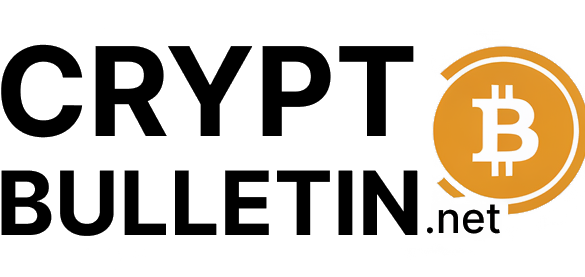Cryptocurrency has revolutionized the financial industry, offering decentralized digital currencies and promising attractive investment opportunities. One popular investment method in the crypto world is staking, which allows individuals to participate in the network and earn rewards for holding and validating transactions. While crypto staking offers several benefits, it is important to explore its drawbacks to make informed investment decisions. In this article, we will delve into the drawbacks of crypto staking, highlighting potential risks and challenges investors may face.
Introduction to Crypto Staking
Crypto staking is the process of participating in a Proof-of-Stake (PoS) blockchain network by holding and “staking” a certain amount of cryptocurrency as collateral. By doing so, stakers contribute to the network’s security and consensus mechanisms, and in return, they receive rewards in the form of additional cryptocurrency tokens. Staking offers an alternative to mining, the process used in Proof-of-Work (PoW) blockchains like Bitcoin.
What is Crypto Staking?
Crypto staking involves locking up a specific amount of cryptocurrency in a staking wallet or smart contract. This locked-in capital helps secure the network and maintain the blockchain’s integrity. Stakers are then responsible for validating transactions and creating new blocks. In exchange for their participation, stakers receive rewards, typically in the form of additional tokens.
The Benefits of Crypto Staking
Before exploring the drawbacks, it’s essential to acknowledge the benefits that attract investors to crypto staking. These benefits include:
- Passive Income: Staking allows cryptocurrency holders to earn passive income by participating in the validation and consensus process of a blockchain network. By staking their tokens, individuals can receive regular rewards in the form of additional cryptocurrency. This can be an attractive feature for those looking to generate passive income from their crypto holdings.
- Network Participation: Staking actively contributes to the security and stability of a blockchain network. By staking tokens, participants help validate transactions and secure the network against potential attacks. This active involvement allows individuals to directly participate in the growth and development of the blockchain ecosystem they believe in.
- Token Rewards: Many blockchain networks incentivize stakers by providing additional tokens as rewards. These rewards are typically distributed proportionally based on the number of tokens staked. This mechanism encourages token holders to stake their assets, which in turn helps maintain network security and stability.
- Long-Term Investment: Staking can be seen as a long-term investment strategy for cryptocurrency holders. By staking tokens, individuals commit to holding their assets for a certain period of time, which may result in potential capital appreciation if the value of the cryptocurrency increases over time. Staking can provide an opportunity to earn rewards while holding onto one’s crypto investments.
- Reduced Selling Pressure: When individuals stake their cryptocurrency, they commit to locking up their tokens for a specific duration. This commitment can help reduce the selling pressure on the market, as stakers are less likely to sell their holdings in the short term. This reduced selling pressure can contribute to price stability and reduce the impact of short-term market fluctuations.
Limitations of Crypto Staking
Some of the limitations include:
- Lock-up Period: When you stake your cryptocurrency, it is typically locked up for a certain period of time. During this period, you may not be able to access or use your staked funds. If you need immediate liquidity or want to sell your crypto, you may face restrictions or penalties for early withdrawal.
- Volatility Risk: Cryptocurrencies are known for their price volatility, and staking can expose you to this risk. If the price of the staked cryptocurrency drops significantly during the staking period, you may experience losses when you convert your staked tokens back to the original cryptocurrency.
- Network Risks: Staking involves participating in the consensus mechanism of a blockchain network. If the network experiences technical issues, attacks, or fails to deliver on its promises, your staked funds may be at risk. This can include potential loss or theft of the staked assets.
- Centralization Concerns: Some crypto staking models may require participants to delegate their staking power to a third-party service provider or a pool. This centralization can introduce risks such as counterparty risk, where the service provider mismanages or loses the staked funds, or the concentration of power in a few entities, which may affect the decentralization aspect of cryptocurrencies.
- Inflationary Effects: In certain staking models, participants are rewarded with additional tokens as an incentive for staking. However, the increased token supply resulting from these rewards can lead to inflationary pressure, potentially devaluing the tokens held by participants.
Drawback 1: Locked-in Capital
One significant drawback of crypto staking is the need to lock up capital for a specific period. When staking, investors commit their funds to the staking process, and during this period, they may not have immediate access to their tokens. This lack of liquidity can be a concern, especially in volatile market conditions or when unexpected financial needs arise.
Drawback 2: Market Volatility

Crypto markets are notoriously volatile, and staking does not shield investors from market fluctuations. While staking rewards can offset some losses, the value of staked tokens can still be affected by price volatility. If the value of the staked cryptocurrency decreases significantly, investors may experience losses when they decide to unstake their tokens.
Drawback 3: Limited Liquidity
In addition to locking up capital, staking can limit liquidity options. Once tokens are staked, they are typically inaccessible until the staking period ends. This lack of liquidity may restrict investors from taking advantage of other investment opportunities or accessing their funds when needed.
Drawback 4: Technical Complexity
Participating in crypto staking often requires technical knowledge and expertise. Investors must set up staking wallets, understand network protocols, and navigate through various staking platforms. This technical complexity can be a barrier for individuals who are new to the cryptocurrency space or less tech-savvy.
Drawback 5: Security Risks
While staking offers rewards, it also exposes investors to security risks. Staking involves entrusting funds to staking wallets or smart contracts, which may be susceptible to hacking or vulnerabilities. Investors must take extra precautions to secure their staking setups, including using strong passwords, enabling two-factor authentication, and choosing reputable staking platforms.
Drawback 6: Regulatory Concerns
The regulatory landscape surrounding cryptocurrencies is still evolving. Depending on the jurisdiction, staking activities might fall under specific regulatory frameworks, potentially subjecting investors to compliance requirements and legal uncertainties. It is essential for investors to understand and comply with the relevant regulations governing staking activities.
Drawback 7: Lack of Control
When staking, investors delegate their tokens to a staking pool or validator. This delegation means that investors have less control over the network’s decision-making processes. If a staking pool or validator behaves maliciously or makes poor decisions, it could negatively impact the stakers’ rewards and the overall network performance.
Drawback 8: Potential for Losses
While staking rewards can be lucrative, there is always the possibility of financial losses. The value of the staked tokens may decrease, staking platforms may have technical issues or suffer from attacks, and the network itself might face unexpected challenges. Investors should carefully evaluate the risks associated with staking and diversify their investments accordingly.
Drawback 9: Network Participation Requirements
Different blockchains have varying participation requirements for staking. Some networks have minimum staking amounts or specific criteria to become a validator. These requirements may limit the accessibility of staking to certain individuals or exclude smaller investors from participating in the network.
Drawback 10: Dependency on Network Performance
The success of staking is closely tied to the performance and stability of the underlying blockchain network. If the network experiences issues such as congestion, slow transaction times, or forks, it can impact the staking rewards and overall user experience. Investors need to assess the network’s reliability and scalability before committing their funds.
Drawback 11: Inflationary Pressure
In some PoS blockchains, the creation of new tokens as staking rewards introduces inflationary pressure on the cryptocurrency’s total supply. This inflation can potentially erode the value of the staked tokens over time. Investors should consider the inflation rate and the impact it may have on their staking rewards and overall investment strategy.
Conclusion
Crypto staking undoubtedly offers several advantages, including the potential for passive income, participation in blockchain governance, and supporting the growth of decentralized networks. However, it is crucial to be aware of the drawbacks and limitations associated with staking. The volatile nature of cryptocurrencies, lock-up periods, technical and network risks, regulatory uncertainties, centralization risks, and opportunity costs should all be carefully considered before engaging in staking activities. By understanding these limitations, stakers can make informed decisions and manage their risks effectively in the rapidly evolving world of crypto staking.
FAQs
Can I unstake my assets before the staking period ends?
Unstaking before the specified period can vary depending on the platform or network. It’s important to check the terms and conditions of the staking service you are using.
What happens if the staking platform I use shuts down?
If a staking platform shuts down, there is a risk of losing access to your staked assets. It’s advisable to choose reputable platforms and stay informed about their reliability.
Are staking rewards consistent?
Staking rewards can vary based on network performance, staking duration, and the number of participants. They are not guaranteed to remain consistent.
How can I secure my staked assets?
Securing staked assets involves using hardware wallets, strong passwords, enabling two-factor authentication, and keeping software and systems up to date to minimize security risks.
Is crypto staking subject to taxation?
Taxation regulations for crypto staking vary by jurisdiction. It’s important to consult with a tax professional or local authorities to understand the tax implications of staking in your country.


